My colleagues here at Brookings have written artfully about the pros and cons of the recent U.S.-Taliban peace deal, and the overall outlook for Afghanistan. I agree with much of their analysis, all of which is rooted in their deep expertise on the issue at hand.
Having led all U.S. and NATO forces in Afghanistan from 2011-13, I have my own perspective on this agreement, which is grounded in practical, lived experience. As I’ve said publicly, the Taliban are untrustworthy; their doctrine is irreconcilable with modernity and the rights of women; and in practice, they’re incapable of summoning the necessary internal controls and organizational discipline needed to implement a far-flung agreement like this. The so-called “Agreement for Bringing Peace to Afghanistan” will not only not be honored by the Taliban, it will also not bring peace.
While others have written more comprehensively on the overall agreement, here, I’ll express my specific misgivings over a number of points.
The U.S. committed to a significant number of measurable commitments. The Taliban did not.
From a specific departure deadline to a series of diplomatic and legal obligations, U.S. negotiators have provided in detail exactly what they intend to do in order to fulfill their end of the bargain. All of this was done — seemingly — to create an environment in which the Taliban felt the U.S. was operating clearly and in good faith.
Yet, the Taliban in turn have been obligated to very little that can be measured in any meaningful sense. Vagaries about ongoing negotiations with the Afghan government or the broad intent to keep Afghanistan safe from those who would collude with the Taliban against the U.S. and allied interests — these are not measurable, nor are they enforceable. And why would we ever believe the Taliban would now break with al-Qaida et al, when under the hammer blows of 150,000 coalition troops and hundreds of thousands of Afghan security personnel, they wouldn’t.
That’s not only my view, it’s also what Taliban leaders are saying informally outside the negotiating halls. Without a specific verification and enforcement mechanism, aspirational Taliban commitments will be impossible to address, and local incidents of violence will be chalked-up to rogue elements of the group. It’s also worth remembering that the number two in the Taliban — Sirajuddin Haqqani, recently published by the New York Times — orchestrated the introduction of the lead elements of al-Qaida into the war against the Soviet Union. These connections run deep and are not likely to be given up at precisely the moment the U.S. is leaving Afghanistan.
The U.S. and Taliban committed to intra-Afghan talks. Ongoing violence prevents these from occurring.
The official U.S.-Taliban deal details a number of talks that would continue well into the future between the U.S., Taliban, and the government of Afghanistan. And yet, ongoing violence, especially against innocent civilian communities, largely negates the value in these discussions. Just on schedule, the Taliban are attacking the Afghan government while supposedly not attacking the U.S. and our allies. Why would the U.S. commit to an agreement where the Taliban could conclude that the U.S. and its coalition partners would be immune from attack, but the U.S. would be sanguine about the Taliban attacking our principal ally in this war, the Afghan government? On its face alone, the Afghan government would be hard-pressed to find a good, logical reason to meet amidst ongoing attacks. These activities by the Taliban are the very definition of bad-faith behavior, and with the U.S. departing, the government of Afghanistan will have significantly less power and authority to hold the Taliban accountable, and to enter into talks on an even remotely equal footing.
In such an environment, the entire premise of intra-Afghan peace talks is called into question and is potentially rendered useless. We’ve seen this before in Afghanistan and elsewhere: In the time between commitments to limit or cease violence and the final implementation of agreements, violence may spike as one side or the other seeks to change the facts on the ground to achieve relative advantage ahead of formal compliance. No one should be surprised the Taliban is attacking Afghan government forces. The U.S.-Taliban agreement left them no incentive not to, so of course we’re already bombing the Taliban in Helmand Province.
Furthermore, there’s very limited capacity for the Taliban to control violence themselves, even if they wanted to.
From my own experience, the Taliban are too decentralized and too diverse a group to meaningfully control themselves. Over and over during Eid ceasefires, while the Taliban crowed about its capacity to demonstrate control over violence, innocent Afghan civilian were killed and injured by the hundreds. One could be negotiating directly with the Quetta Shura or Peshawar Shura Taliban, and still you would have field commanders making independent decisions absent any ongoing “official” discussions or agreements. Too often we treat this group as one homogeneous entity when in fact it is a loose conglomeration of local tribal leadership, independent warlords, and disconnected or siloed cells. Any argument that the Taliban can control violence in the long-term is a fantasy.
The current deal obligates the Afghan government to release 5,000 Taliban fighters by March 10. Yet, in almost every instance, a mass release is immediately followed by an uptick in violence.
To be clear, if the United States was not willing to take a stance on behalf of Afghan women’s rights (more on that later), it had no business negotiating away the Afghan government’s prerogatives on releasing 5,000 hardened Taliban fighters. These 5,000 are in Afghan government hands because they’re killers. Killers of Afghan security forces, but much worse, killers of innocent Afghan civilians.
It should follow, then, that this aspect of the agreement has gone down hard with the Ghani government, which should instead have been supported by the U.S. government in making the decision themselves, especially given the likelihood that these individuals will be found on the frontlines within days of their release. This is a critical flaw in the deal, and I was unsurprised to learn that President Ashraf Ghani announced his refusal to release these prisoners within 24 hours of the deal’s signing. If these prisoners are to be released, it should come at the satisfactory conclusion of the intra-Afghan talks, not as a precondition by the Taliban to their talking with the Afghan government, and certainly not at the beginning of the talks.
Finally, and most importantly, the U.S. failed to establish an internationally acceptable minimum standard for the rights of women.
When asked about the U.S. position on this vital matter in the context of the U.S.-Taliban negotiations, American officials dismissed there being an American role in guaranteeing the rights of Afghan women, suggesting this should be left to the Afghans to sort out. The position of women in Afghanistan is today, such as it is, precisely the result of the U.S. and coalition involvement, and never could have emerged to this degree without the courageous stands by Afghan women activists, as well as our remaining steadfastly committed over the last two decades to women’s rights.
It’s utterly absurd to believe the Afghan government and Taliban will ever find an outcome for Afghan women consistent with our values. For the U.S. to have concluded this agreement without a clear statement of our expectation for the rights of women is an abandonment of our principles and the very reason we fought so long and so hard. Simply, to leave the fate of Afghan women to the intra-Afghan dialogue is a massive abdication of American and international responsibility to support universal human rights. We should all be very clear on something: The Taliban will never accord Afghan women the respect and the place in the future Afghan society that they deserve. For the U.S. government to believe otherwise is either the height of naïveté, or the willful abandonment of these women, or both.
If there’s one thing that always comes to mind for me when thinking about my service in Afghanistan, it’s the faces of the women and young girls, many of whom were able to go to school for the first time and lifted themselves out of poverty as a result. The Taliban would seek to destroy that progress and reverse it. Indeed, the Taliban and their allies endorse a form of Islam with results that deprive women of any meaningful rights as we understand and enjoy them in the year 2020 — among them the right to an education and the freedom to pursue their own wants and interests, such as, for example, the legal profession. To think that once the U.S. and the coalition depart Afghanistan the Taliban will undergo some form of humanitarian metamorphosis and doctrinal epiphany is, frankly, ridiculous.
With familiar bombast, we’re being told not to worry — that if the Taliban violate the terms of this agreement, the U.S. will come roaring back into Afghanistan with overwhelming force. But to do what? Fight the Taliban ourselves? Reinforce the Afghan security forces? And how many innocent Afghans will have died in the meantime over this failed experiment in peacemaking? From an administration that has, in the last six months, abandoned the Kurds in Syria and undercut the Palestinians, it’s hard to imagine an American strategic counterattack into Afghanistan when the Taliban inevitably violate the terms of this agreement, but only just enough to harm the Afghans, and not enough to necessitate the redeployment of our U.S. armed forces.
The Taliban know what year it is, and they know the U.S. forces will be coming out ahead of the U.S. presidential election. They’re wagering that this administration, which seeks to point to this agreement in the months ahead as evidence of keeping a campaign promise, will be extremely reluctant to walk away from this agreement or come back in over local violations. They have the U.S. exactly where they’ve wanted us, but to where they couldn’t maneuver previous administrations. The Taliban are many things: drug dealers, violent abusers of women, and terrorists. But there’s one thing they are not: stupid.



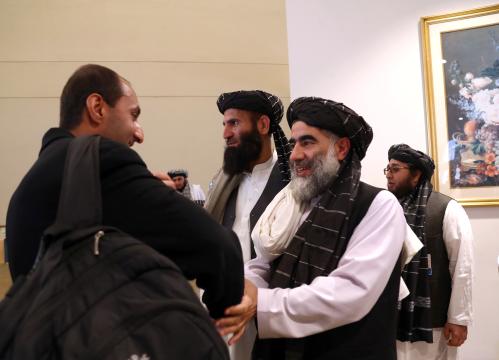
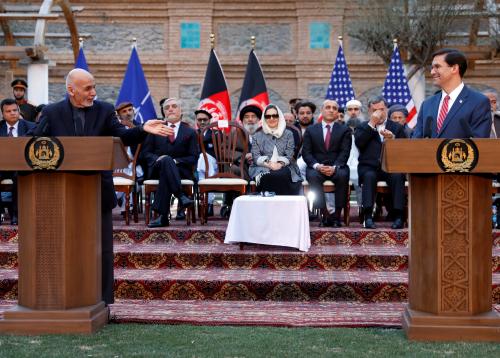
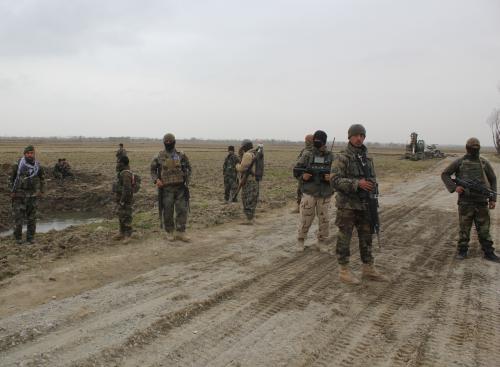

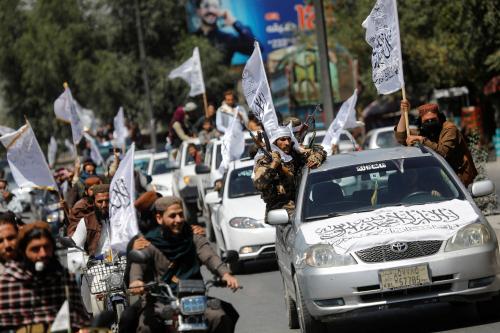
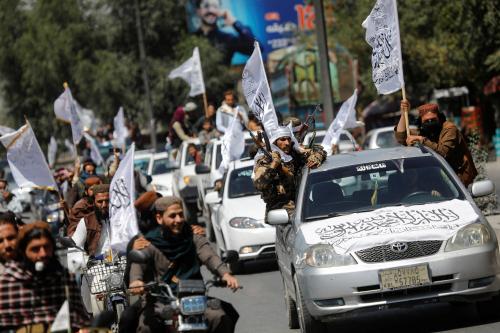
Commentary
The US-Taliban peace deal: A road to nowhere
March 5, 2020